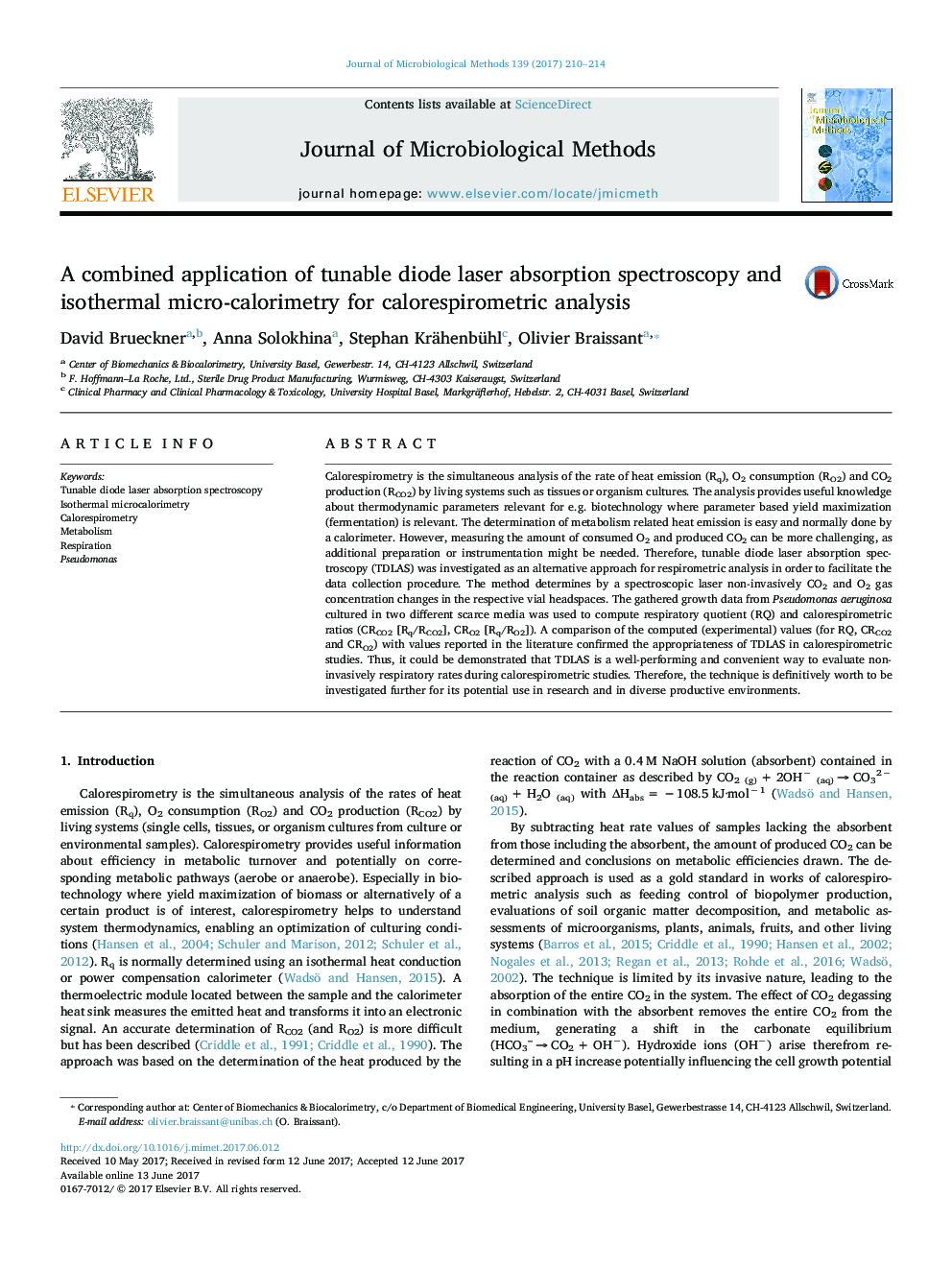| کد مقاله | کد نشریه | سال انتشار | مقاله انگلیسی | نسخه تمام متن |
|---|---|---|---|---|
| 5522303 | 1545904 | 2017 | 5 صفحه PDF | دانلود رایگان |
- An alternative technique for calorespirometric assessments is proposed.
- The technique relies on a TDLAS-based CO2 and O2 headspace measurement of samples inoculated with Pseudomonas aeruginosa.
- Results were similar to litterature, thus TDLAS could replace conventional methods determining CO2 and O2 in samples.
Calorespirometry is the simultaneous analysis of the rate of heat emission (Rq), O2 consumption (RO2) and CO2 production (RCO2) by living systems such as tissues or organism cultures. The analysis provides useful knowledge about thermodynamic parameters relevant for e.g. biotechnology where parameter based yield maximization (fermentation) is relevant. The determination of metabolism related heat emission is easy and normally done by a calorimeter. However, measuring the amount of consumed O2 and produced CO2 can be more challenging, as additional preparation or instrumentation might be needed. Therefore, tunable diode laser absorption spectroscopy (TDLAS) was investigated as an alternative approach for respirometric analysis in order to facilitate the data collection procedure. The method determines by a spectroscopic laser non-invasively CO2 and O2 gas concentration changes in the respective vial headspaces. The gathered growth data from Pseudomonas aeruginosa cultured in two different scarce media was used to compute respiratory quotient (RQ) and calorespirometric ratios (CRCO2 [Rq/RCO2], CRO2 [Rq/RO2]). A comparison of the computed (experimental) values (for RQ, CRCO2 and CRO2) with values reported in the literature confirmed the appropriateness of TDLAS in calorespirometric studies. Thus, it could be demonstrated that TDLAS is a well-performing and convenient way to evaluate non-invasively respiratory rates during calorespirometric studies. Therefore, the technique is definitively worth to be investigated further for its potential use in research and in diverse productive environments.
Journal: Journal of Microbiological Methods - Volume 139, August 2017, Pages 210-214
